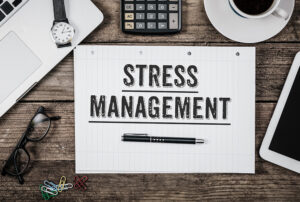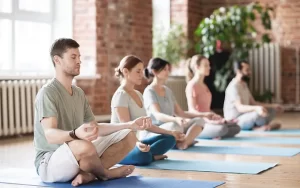Because our world is so busy and demanding, many people feel stressed all the time. The good news is that meditation, which has ancient roots, can be an effective way to manage stress and improve overall health. This step-by-step guide will show you how to make meditation part of your daily life, helping you live a better, more balanced life.
Step 1: Find a Quiet Space
Reserve a place where you can relax without being disturbed. There are plenty of places to sit or lie, very comfortable. Choose a corner room, a comfortable chair, or one outside. To focus on your meditation, make sure the environment is quiet and free of distractions.
Step 2: Choose a Time
When starting a meditation routine, it is important to be consistent. Set aside a certain amount of time each day for meditation. Setting a regular time for meditation every day, whether it’s in the morning to clear your head to start the day, or to relax in the evening, is key to building the habit.
Step 3: Comfortable Posture
Find a comfortable position where you can rest while still staying awake. In a chair, you can put your feet on the floor and sit cross-legged on a cushion. You can even lie down if sitting is too difficult. Keep your back straight to promote deep breathing and energy flow.
Step 4: Pay Attention to Your Breathing
First, take a few deep breaths. Then allow your breathing to return to normal. Pay close attention to the sensations of each inhale and exhale. Feel the air moving in and out of your body. If your thoughts wander, gently bring them back to your breathing.
Step 5: Be Aware of Your Heart
As you continue to breathe, notice the present moment. Pay attention to the sensations in your body, the things around you, and any thoughts that arise. Don’t get carried away by your thoughts, just observe them and don’t judge them. By being aware of your thoughts and feelings, you can learn to accept them without judgment.
Step 6: Meditate with a Guide or Mantra
You may want to add guided meditation or mantras to your daily routine. You can find guided meditations online or in meditation apps. They provide you with a clear experience through soothing voice-overs. Mantras are repeated words or sounds that can help you focus and calm your mind. Choose what works for you.
Step 7: Slow and Steady Progress
Start with shorter meditation sessions, for example, 5-10 minutes. As you get used to it, you can add more time. Don’t expect too much and know that consistency is more important than the length of time. Over time, your meditation may become easier.
Step 8: Pay Attention to What You Do Every Day
Add mindfulness to your daily tasks and reap the benefits of meditation even when you’re not meditating. When you eat, walk, or work, focus on the present moment. Practicing mindfulness in your daily life can help you feel more alert and less stressed.
Step 9: Be Patient and Gentle with Yourself
Over time, you can get better at meditating. Know that it is normal to encounter questions and other distractions as you practice. Instead of getting angry, be kind and patient with yourself. Every time you meditate, you have the opportunity to learn more about yourself and grow.
Step 10: Reflect on Your Progress
Think about how meditation can change your life regularly. Pay attention to general changes in your stress, mood, and health. Enjoy the small victories and change your strategy if necessary. Meditation is a personal path and you may not feel the results right away.
Conclusion
By following this step-by-step guide, you can begin a life-changing journey to using meditation to manage and relieve stress. Remember that continuity, kindness, and patience are most important. If you make meditation part of your daily life, you’ll likely feel calmer and stronger, and that’s not just what happens during a meditation session.
FAQs
1. How long does it take for each meditation practice to work?
Keep the sessions short at first, about 5 to 10 minutes. As you get used to them, you can slowly lengthen them. The important thing is to be consistent, not how long each exercise takes.
2. Do I have to sit at the same time every day?
Having a set schedule isn’t necessary, but it will help you develop a habit. You can choose a time that suits you, for example starting your day in the morning or relaxing in the evening.
3. Should I sit down and relax, or can I just lie down?
You can meditate lying down or in another comfortable position. The most important thing is to find a position that allows you to rest while staying awake. Most people choose to cross their legs or sit in a chair.
4. What if my mind keeps wandering while meditating?
It’s okay for your mind to wander. Slowly let your attention return to your breathing or the present moment as it arises. Don’t judge yourself, know that part of meditation is changing your thoughts.
5. How do I choose between chanting and guided meditation?
Try both methods to see which works best for you. Guided meditations are structured sessions with voiceovers, while mantras are methods of calming the mind through the repetition of words or sounds. Choose a method that makes you enjoy meditation more.
6. Can I practice awareness even if I don’t meditate?
Certainly. Mindfulness can be part of daily life, such as eating, walking, or working. Being fully present in the present moment will help you feel more alert and reduce stress throughout the day.



